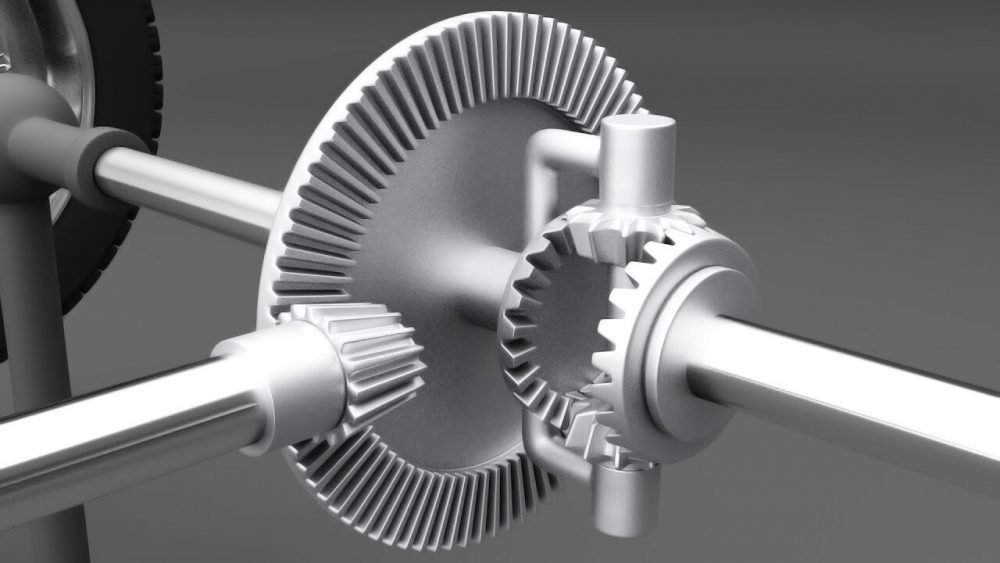A differential is a mechanical component that is used to transmit power from the transmission to usually the vehicle’s rear wheels. Yes, a differential is used to transmit power from the engine to the wheels of a vehicle. These wheels can either be front wheels or also rear wheels. Usually, a differential is associated with cars with a front-mounted engine and either rear-wheel drive, All-Wheel Drive or 4X4. Well, AWD and 4X4 are similar but are different. To know more about the difference, refer to the article here.

That said, all the cars running on the streets have a differential, although the differential in front-wheel drive cars is called a transaxle.
But a differential is more than transmitting power. So, before further ado, let us look in detail and answer the questions like the use of a differential, how it works, what are its benefits and more.
Why a car needs a differential?
Although the above-mentioned is the primary function of transmitting power, there are other functions for a differential in a vehicle. Here are the other functions of a modern-day differential.

The other function of a differential is the extinction of just transmitting the power. It allows the rear wheels of a vehicle to rotate at different speeds. And this function in itself is an integral part of the functionality of the differential.
The front wheels on a vehicle rotate at different speeds when compared to the rear wheels. This is the case in cars that are front-wheel drive, rear-wheel drive and also with all-wheel drive configuration. If the cars didn’t have a differential, it would have been impossible to rotate the car’s wheels at different speeds. This would increase the tyre slip, in turn increasing the tyre degradation.

Moreover, the differential also acts as a final reduction gear which is used to slow the rotational speed of the transmission before hitting the road via the wheels.
What are the types of differentials?
Yes, for a not-so-complicated component in a vehicle, a different is of various types. Well, the different types of differential used in cars are
-
Open Differential
An open differential is a common differential that can handle slippage or fluctuations in the wheel speed. The open differential enables the vehicle’s outer wheel to rotate more swiftly than the inner wheel when the driving conditions are suitable. Unfortunately, this doesn’t work so well when the road conditions are bad. The open differential might not function as well as it does on clearer roads if there is a lot of ice or snow on the ground. This occurs as a result of the engine torque being continuously delivered to each wheel, regardless of whether it has traction or not. A tire that slips will therefore keep spinning. Because open differentials are inexpensive to buy and maintain, the ordinary automobile has one.
-
Limited Slip Differential
Because it also distributes engine torque to each wheel of the vehicle, a limited-slip differential is similar to an open differential. The distinction is that if you accelerate quickly or make a sharp curve, tire slippage would result from an open differential. A limited differential, on the other hand, lessens the torque sent to the slipping tire to stop additional slippage. The tire with the least resistance is this one. Tires can make those strong bends at higher speeds with limited-slip differentials’ plates and clutches. High-performance automobiles, such as race cars, frequently use limited-slip differentials.

Mahindra XUV700 / AWD -
Locking Differential
For off-road driving, locking differentials are frequently installed in automobiles. They could be found in some fast cars as well. A locking differential essentially has springs and clutches that enable a lock to be engaged. After that, power is distributed evenly to each wheel, regardless of how much traction they have. You could claim that this axle is fixed because of the locking differential. The biggest benefit in this situation is that your tires will have more traction on the ground. After all, on a wheel with less traction, the torque always goes to the wheels without any restrictions. This is ideal for off-road driving, but it could be dangerous if travelling quickly on a straight route.
Also Read: Made-in-India VW Virtus scores 5-star in Latin NCAP
-
Torque-Vectoring Differential
The highly developed torque-vectoring differential comprises numerous electronic and sensory components. Their function is to gather data from the vehicle’s various systems and sensors, including the steering system, the throttle position, and the road surface. When this information is received, an electronic controller and clutches are activated. Torque-vectoring differentials are often used in high-performance vehicles due to their intricacy. They are more expensive than the other differentials because of this. However, it is worth the money if you want a driving experience unlike any other.
GoMechanic News: No more Diesel cars in NCR?
That was a basic overview of the differentials. Well, there is more to a differential than meets the eye. Well, the working and construction of a differential is a little too complicated and would take its own space in the article. So, if you are interested in knowing the details of it, do let us know in the comment section.





